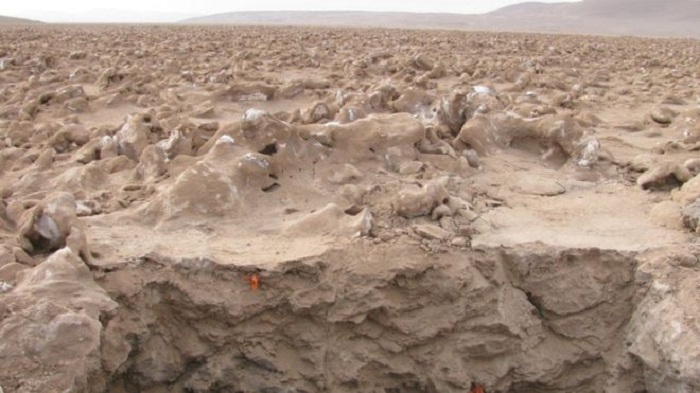This watery period dates to between 9,000 and 17,000 years ago.
Scientists at the American Geophysical Union meeting in San Francisco say it suggests the region may have been habitable for early settlers.
Marco Pfeiffer, from the University of California, Berkeley, said: "When you drive through the desert the only thing you see is the white cover of salt.
"And when we dig through this crust, it`s difficult to imagine that conditions were so different."
The Atacama Desert gets an average of 15mm of rain each year - and some parts get virtually no precipitation at all.
But this latest research suggests that the heart of this super-dry landscape was once lush.
The researchers have found organic material from plants and animals that only could have survived in or near water.
"The thick salt crusts kept underneath a precious record of a period when these flatlands hosted lakes and wetlands."
This watery area would have covered about 600 sq km of the desert.
The period they date to - from 9,000-17,000 years ago - was a time when hunter-gatherers from the north would have started to colonise South America.
Archaeologists had thought that these ancient people avoided the desert as they migrated to other regions - but the presence of water means it could have supported people.
"Instead of rapidly moving through the few wet streams that exist nowadays from the coast to the Andes, now with this evidence, there was a place where they could settle down and colonise more easily the entire region."
He said that some evidence of human settlements in these once-lake-covered areas had recently been found, and these sites were now being carefully excavated.
However, despite the finding that the Atacama once had lakes and wetlands, scientists do not think that this was caused by rain directly falling on the region.
It is likely ultra-low precipitation conditions have existed here for about 2.5 million years. So for there to have been major wet features, the water must have been imported.
The answer may be the so-called Central Andean Pluvial Events, which saw increased rainfall above the Andes mountains and it was this water that drained into the Atacama Desert.
More about:
























-1745485667.jpg&h=190&w=280&zc=1&q=100)























